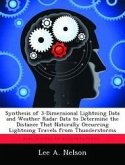Examination of atmospheric and oceanic circulations may explain interannual climate variability in the Northern Hemisphere on a seasonal scale. It is crucial to develop more accurate seasonal climate forecasts using both global circulation and sea surface temperature (SST) indices to aid in long-range weather forecasts. These global circulation and SST indices are becoming increasingly available to worldwide users and using them for seasonal prediction has spread not only to scientists, but also to brokerage firms, utilities, and the Department of Defense (DoD). DoD is extremely interested in long-range seasonal forecasts of severe weather for asset protection, mission planning, and worldwide operations. The goal of this research was to create a predictive algorithm for locations in the southeastern and south-central portion of the United States in support of the Air Force Combat Climatology Center (AFCCC) to use in predicting the intensity of the spring and summer severe weather seasons.








